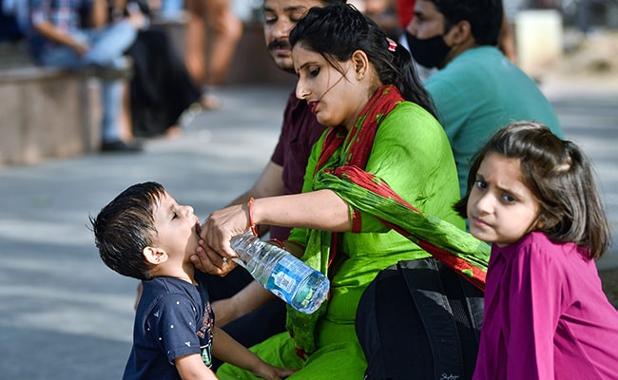The relative humidity in Delhi on Sunday at 8:30 in the morning was 23 per cent and 16 per cent at 5:30 in the evening, recorded at Safdarjung observatory.

New Delhi: National Capital on Sunday witnessed the maximum temperature of 47.3 degrees Celsius, which is seven notches warmer than the normal temperature for this time of the year, at Mungeshpur observatory.
The minimum temperature in the capital city settled at 27.4 degrees Celsius, which is normal for this season, according to the India Meteorological Department (IMD).
The relative humidity in Delhi on Sunday at 8:30 in the morning was 23 per cent and 16 per cent at 5:30 in the evening, recorded at Safdarjung observatory.
According to the data released by the weather station, the observatories at Ridge, Ayanagar, Safdarjung, Najafgarh, Pitampura, Palam, and Lodhi Road recorded maximum temperatures of 45.7 degrees Celsius, 44 degrees Celsius, 44.2 degrees Celsius, 46.3 degrees Celsius, 46.2 degrees Celsius, 44.5 degrees Celsius and 43.9 degrees Celsius respectively.
The IMD said that the capital city witnessed partly clouded sky with the maximum temperature touching up to 44 degrees Celsius.
“On Sunday, heatwave to severe heat wave conditions prevailed over some parts of the capital city,” it said.
“Heat wave conditions prevailed over some parts of Vidarbha and over isolated pockets of Himachal Pradesh, Punjab, Haryana, West Rajasthan and Uttar Pradesh,” IMD said.
The weather station predicted no respite for the delhiites this week, as the strong winds will surface Delhi on 6th-10th June with the maximum temperature of 42-43 degree Celsius and the minimum temperature will shoot upto 27-28 degree Celsius.
On 11th June, the city will witness a partly cloudy sky with the possibility of rain or thunderstorm with a maximum temperature of 41 degrees Celsius and the minimum temperature of 29 degrees Celsius, predicted the weather department.
According to the sources in the discoms, Delhi on Sunday witnessed the peak power demand of 6530 at 12: 23 in the intervening night of Saturday.
The national capital witnessed the minimum power demand of 3965 at 8:57 on Sunday morning, the sources said.
While informing about the reason behind the peak power demand of the city, they said that the cooling load is the main reason behind Delhi’s power load. Infact, according to estimates, almost around 50 per cent of Delhi’s power demand in summers is because of the cooling load which includes, Acs, Coolers, and Fans. The rain had a direct bearing on the cooling load.
The officials of the BSES told that during the year, BSES discoms invested substantial resources to strengthen the network and undertook several unique measures to ensure reliable power supply during the summer months. Apart from preventive maintenance, BSES also does extensive predictive checks to identify hot spots or to pre-determine potential faults and to take remedial measures.
“This is done through thermal scanning, partial discharge measurement, and health assessment of power and distribution transformers. Online load monitoring system is also in place for tracking the power transformers & 11kV feeder load especially during the summers,” he said.
